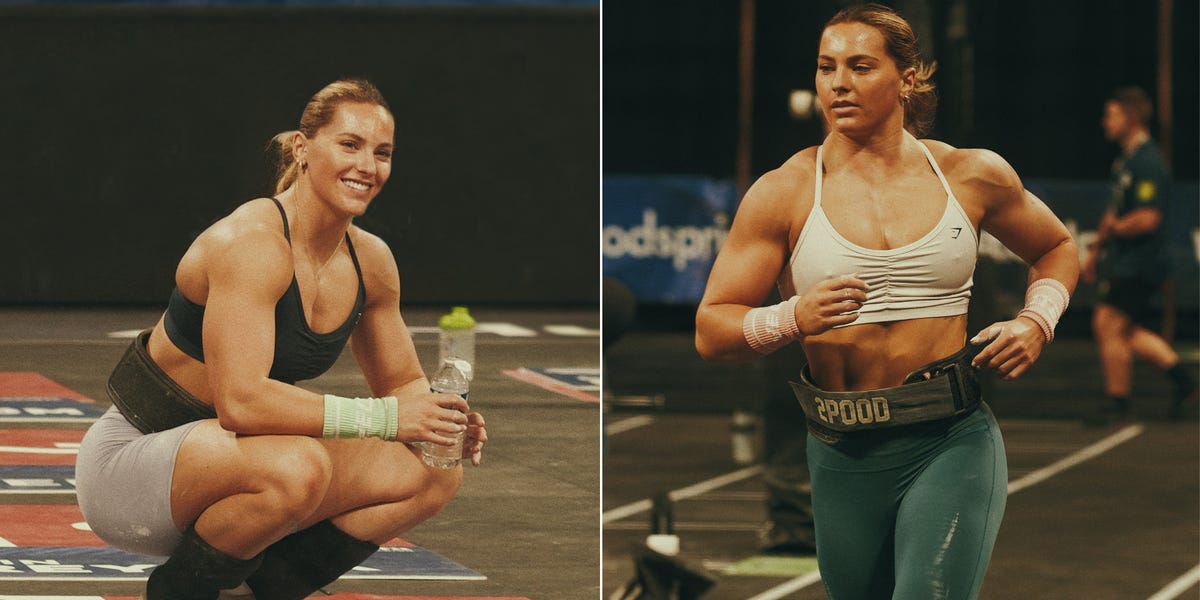
The UK’s Fittest Woman has been training hard ahead of the 2024 CrossFit Games on August 8, and rucking is a key part of her arsenal.Rucking — wearing a backpack containing a weight plate while walking or performing exercises — originated as a military training tool but has soared in popularity among people hoping to get more out of their walks, including founders and VCs in Silicon Valley.Aimee Cringle, 25, earned the title of UK’s Fittest Woman after finishing first in the her country’s CrossFit semi-finals. She told Business Insider that wearing a ruck while training makes exercises more challenging. So when she competes without a ruck at the games, exercises should feel easier.Cringle broke down her intense training regime and shared how she uses rucking to build strength and fitness.Rucking helps to build strengthCringle, whose background is in athletics, trains six days a week. Since moving to mainland England in 2023 to work with a new coach, her training has become a lot more structured, she said, and features less steady-state cardio like cycling, running, and swimming.Instead, she’s concentrated more on strength-building. In addition to classic weight lifting, Cringle has been using a ruck to make exercises such as legless rope climbs, tricep dips, and chest-to-bar pull-ups, more challenging, she said.”I guess if you can do stuff with a ruck on, you can do it better without,” Cringle said. “It makes everything harder.”After performing an exercise wearing a ruck, it suddenly feels a lot easier once you take it off, which is “quite cool,” Cringle said.She’s never done the same workout twice
Gymnastic skills are an important part of CrossFit.
Common Ground
No two days are the same in Cringle’s training regime, however, an average week might include the following:Monday morning: two 20-minute AMRAPs (as many rounds or reps as possible) including rope climbs, sled work, running, and rowingMonday afternoon: rope climbs, dips, and handstand push-ups wearing a ruckTuesday morning: 400-calorie assault bike, five-kilometer row, 400-calorie assault bikeTuesday afternoon: strength training including squats and snatches, shorter high-intensity workout, and accessory movementsWednesday morning: interval trainingWednesday afternoon: gymnastic work such as hand-stand walks, ring muscle-ups, and GHD sit-upsThursday: active recovery such as swimming or cyclingFriday morning: runningFriday afternoon: strength trainingSaturday morning: strength work such as bench press, plus conditioningSaturday afternoon: gymnastic-focused group training, such as rope climbs, handstand push-ups, and handstand walksSunday: full rest day or gentle walk or cycle”I haven’t done the same workout twice ever,” Cringle said.Cringle’s priority is performance
Cringle’s priority is getting stronger.
Common Ground
As Cringle has improved her CrossFit skills, she has built muscle, and she previously told BI that accepting her growing body wasn’t always easy.However, she’s focused on performance rather than aesthetics.”If I can reach my goal then I’ll do what needs to be done, and if that was to put on some weight…” Cringle paused mid-thought. “With CrossFit, we’re athletes, so we are bound to look stronger and larger than the average human. It seems to have worked anyway.”
Cringle continued: “Some of the stuff we can do, it’s so impressive. Maybe not even me, but the weights some girls can lift — and a lot of girls aren’t even that big and they can lift so much and do so much. So I think I’d rather do that, maybe weigh a bit more and just lift so much.”Despite being the third British woman to ever qualify for the CrossFit Games in the individual elite category, Cringle struggles to feel proud of herself. But it’s this constant drive to do better and achieve more that is seeing Cringle’s star rise.






